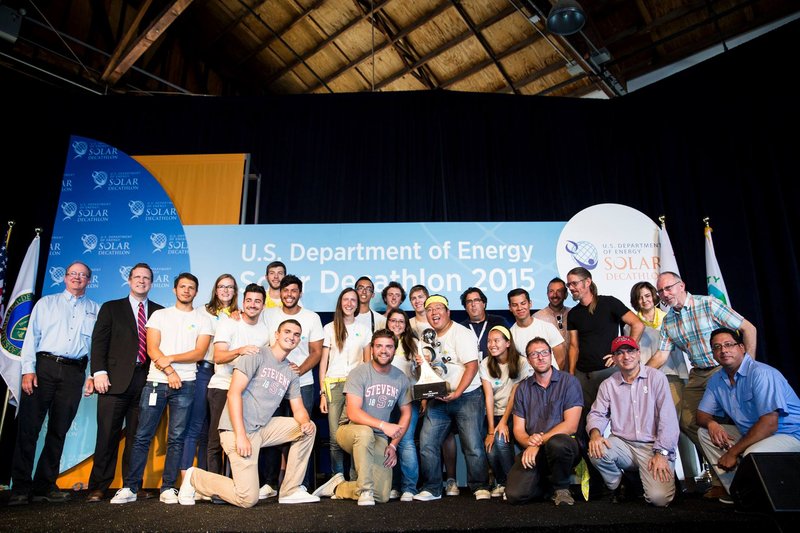HOBOKEN – A team of over 60 students and around a dozen faculty members at Steven’s Institute of Technology won top honors in the U.S. Department of Energy Solar Decathlon 2015 this past week.
The competition, run by the U.S Department of Energy, included teams from five countries across two continents including the United States, Germany, Honduras, Italy and Panama.
“This competition challenges the best and brightest minds from around the world to create innovative, highly energy-efficient homes that will change how we build,” said U.S. Energy Secretary, Ernest Moniz.
Due to the aftermath of Superstorm Sandy, Hoboken’s team decided to make their zero-energy house a hurricane-proof structure suitable for the Jersey Shore (‘SURE House’ doubles as a pun on ‘shore house’ and is a portmanteau of the dual goals of sustainability and resilience).
“This is a monumental feat and our students have much to be proud of,” said John Nastasi, lead faculty advisor on SURE HOUSE after the winners were announced.
Won over a dozen other entries
The panel scored the SURE HOUSE, which was designed for a waterfront plot in the shore community of Seaside Park, a 950.685 – outshining over a dozen other student teams from universities around the world, ranking highest in architecture, market appeal, communications, appliances, engineering, commuting and home life. The Stevens team, who began to build the SURE HOUSE in spring 2014, was commended for overall design, energy efficiency and sustainable operations.
“On behalf of the City of Hoboken, I congratulate the students and faculty of the SURE House team on their tremendous accomplishment,” said Hoboken Mayor Dawn Zimmer. “Flooding is a century-old challenge for Hoboken, and this project is further demonstration of Stevens’ commitment to our community.”
The competition was held at Orange County Great Park in Irvine, Calif.
The Stevens’ house was built with fiber-composite materials repurposed from the boat building industry and designed as armor against extreme weather with a minimal carbon footprint. Ultimately, the house uses 90 percent less energy than a conventional home.
The exterior of the house has bi-fold storm shutters made with composite foam core and wrapped with fiberglass “installed to shade the home throughout the year and act as the primary defensive barrier to block debris and water during inclement weather.”
“This incredible victory is the culmination of a two-year journey and a testament to the hard work, commitment and ingenuity of the Stevens Solar Decathlon team,” said Stevens President Nariman Farvardin.
